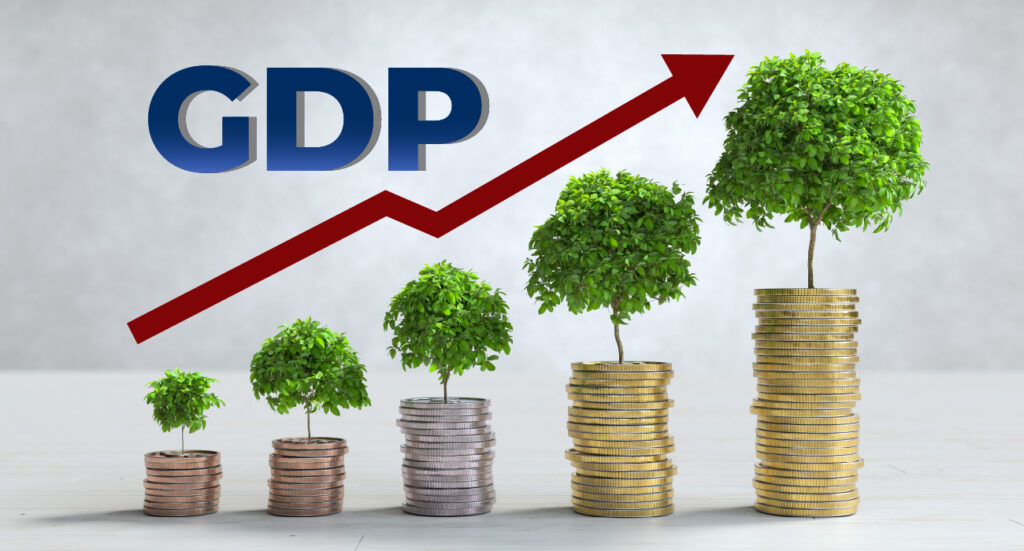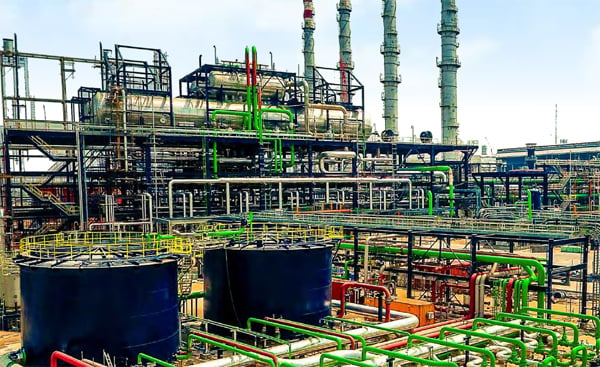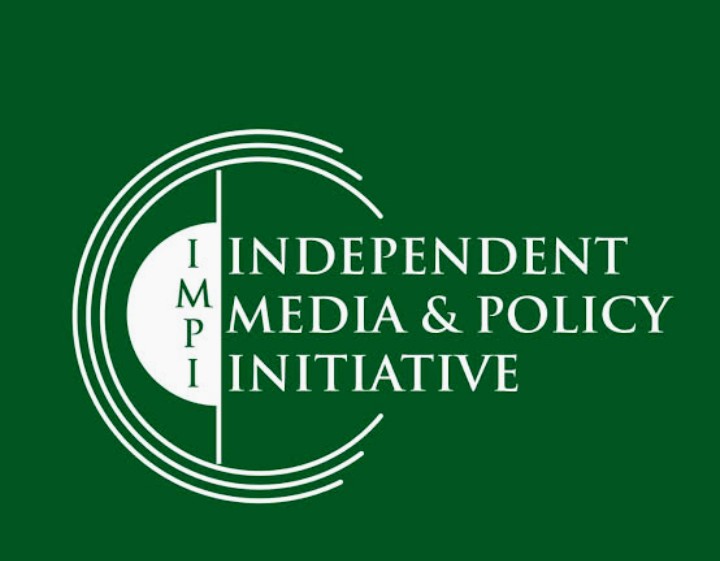
- Gross Domestic Product (GDP)
- Touted inflation figures
- IMF Projections lacuna
- Reliability in FMF & CBN projections
- The reality of the Nigerian economy.
The latest inflation figure and Gross Domestic Product (GDP) projection by the International Monetary Fund (IMF) have raised concerns over the integrity of interpreting critical economic data and forecasts, especially as the Fund has access to official data through its annual IMF Staff Article IV Consultation Mission.
The Mission allows entry into the crevices of any country’s central bank, Ministry of Finance, Budget Department, and other offices directly or indirectly responsible for monetary and fiscal policies.
Of course, the IMF team, led by mission chief Axel Schimmelpfennig, held meetings with top government officials, including Wale Edun, the Minister of Finance and Coordinating Minister of the Economy; Yemi Cardoso, the Governor of the Central Bank of Nigeria; and other representatives from the Ministries of Agriculture and Environment, labour unions, civil society, and the private sector.
The Mission to Nigeria report, published in the IMF World Economic Outlook Report, projected a significant rise in Nigeria’s headline inflation rate, reaching 37 per cent in 2026 from a projected 26.5 per cent in 2025.
According to the IMF, the rationale for these alarming projections includes loose financial conditions, high international food prices, and the widening parallel market premium. These factors, in our consideration, have few possible consequences in the context of Nigeria’s macroeconomic dynamics.
As we found ourselves in disbelief, it was heartening to see Nigerian analysts and policymakers, with their deep understanding of the local economic dynamics, expressing their astonishment over the IMF forecasts. For the first time, these experts united to dispute the IMF projections, describing them as exaggerated.
From our perspective, the IMF forecast is an abuse of data aggregation and interpretation. We do not understand the methodology used by the IMF to arrive at the projected figures. In sharp contrast to the IMF, the World Bank projected Nigeria’s inflation to ease to 22.1 per cent in 2025, down from 26.6 per cent in 2024, with further moderation to 15.9 per cent by 2027.
The World Bank projections followed the rebasing of the Consumer Price Index (CPI) by the National Bureau of Statistics (NBS) in January 2025. What is apparent is that Nigeria’s inflation trajectory remains a key point of divergence between the World Bank and the IMF.
Our research shows that headline inflation fell from 34.80 per cent in December 2024 to 24.48 per cent in January 2025 before inching up to 24.23 per cent in March, reflecting persistent cost-of-living pressures, especially food inflation.
However, even in 2024, when inflation was high and unrelenting, it averaged 33 per cent. We, therefore, reason that while policies are needed to reinforce production and productivity in the economy, the IMF conveniently refused to account for the federal administration’s plethora of domestic policies. These include CBN’s sustained management of monetary expansion and interventions in managing supply-side constraints and exchange rate instability.
We have observed strenuous efforts by the federal administration to enhance security in food-producing states, in addition to the duties and levy exemption policy on selected food items imported into the country. The naira-for-crude policy has led to a reduction in the price of petrol and fiscal support for manufacturers. Apart from all these, we have witnessed a regime of growing fiscal discipline by the federal administration, including a determination to increase oil output.
The IMF agreed that the cessation of monetary financing of the fiscal deficit, the removal of costly fuel subsidies, and improvements in the foreign exchange market are essential steps that have enhanced Nigeria’s resilience and positioned the economy more favourably to weather external shocks. Our reading of the Nigerian situation is an incremental improvement in the macroeconomic environment.
Indeed, we do not foresee any significant economic activity that will drive inflation higher in the expected NBS Consumer Price Index (CPI) report for April 2025. As we continue to monitor the macroeconomic space, we firmly believe that the benefits of the federal administration’s economic reforms will permeate the broader population, potentially leading to a significant reduction in poverty and food insecurity.
The same stark contrast is found in the IMF and World Bank forecasts of Nigeria’s economic growth between 2025 and 2026.
In its economic outlook, the IMF downgraded Nigeria’s economic growth forecast for 2025 by 0.2 percentage points to 3.0 per cent, down from 3.2 per cent, while growth for 2026 was also revised downward by 0.3 percentage points to 2.7 per cent.
The IMF justified this forecast by citing projected lower global oil prices as a significant risk to the country’s fiscal and external balances. We wonder how a single factor can be responsible for the projected massive decline in the size of an economy, moreso, when Nigeria is moving away from its dependency on crude oil earnings.
However, the World Bank’s projection, on the other hand, offers a more optimistic view. In its report, the World Bank projected that Nigeria’s economy would grow by 3.6 per cent in 2025, building on an estimated 3.4 per cent expansion in 2024 and, thereafter, strengthening to 3.8 per cent by 2027.
The bank credited the federal administration’s possible sustenance of economic reforms with the gradual stabilisation of the macroeconomic environment. Critical to the World Bank’s projection is the expected improvement in the performance of the non-oil sectors, mainly services such as financial services, telecommunications, and information technology, as well as easing inflationary pressures and improved business sentiment.
The IMF’s GDP data discrepancies are not unique to Nigeria. At different times, IMF country members worldwide have had cause to dispute the body’s projections on various grounds. Mexico, for instance, has also disagreed with the IMF on its forecasts.
In its World Economic Outlook, the IMF forecasted a 0.3 per cent contraction in Mexico’s economic growth for 2025, down from the Fund’s January forecast of a 1.4 per cent expansion, as U.S. tariffs bite into exports.
In dismissing the IMF’s forecast, the Mexican President Claudia Sheinbaum declared, “We do not know what it is based on. We disagree. We have our economic models, which the finance ministry has, that do not coincide with this projection.”
She added that public investments would prevent the economy from contracting. She touted her government’s “Plan Mexico,” an effort to boost domestic industry amid tariffs U.S. President Donald Trump imposed on some imports from Mexico.
From the foregoing, it is clear why Nigerians should not take the recent IMF’s negative economic projections very seriously. Experience has shown that several IMF projections on developing economies, such as ours, often prove inaccurate.
In 2008, the IMF predicted that Zambia would be hit by the fall in copper prices during the financial crisis. The IMF was proven wrong as the Zambian economy survived the global downturn.
We find comfort in the submission of the United States of America (USA) Department of State, which described Nigeria as an economic miracle while commending the federal government’s ongoing reforms.
The World Bank and the IMF acknowledge Nigeria’s bold macroeconomic reforms, which include the removal of fuel subsidies, cessation of the Central Bank’s deficit financing, and unification of exchange rates. We credit these reforms for creating a more predictable macroeconomic environment, supporting growth and dampening inflationary momentum.
We acknowledge the concerns the World Bank and the IMF raised about the limited impact of the policies on reducing poverty among everyday Nigerians.
But the truth is that before 2023, the country had been a site for endemic poverty, with the number of people living in absolute poverty defined in terms of the minimal requirements necessary to afford minimal standards of food, clothing, healthcare and shelter, reaching a high of 99,284,512 people in 2010, about 60.9 per cent of the population at that time.
The NBS estimated the poverty rate to be 54.7 per cent in 2004. The increase in poverty occurred despite Nigeria experiencing economic growth, with crude oil prices ranging between $100 and $120 per barrel and a daily production of 2.3 million barrels.
When the dynamics of the years, especially the oil boom era between 2010 and 2014, are compared to the evolving characters of the present-day economy, we see sufficient indicators of the impact on the average Nigerian in the near term. In other words, if there is ever a possibility of reducing the number of Nigerians living below the poverty line, it is under the current federal administration.
For instance, the recently released Central Bank of Nigeria’s (CBN) March 2025 economic report indicated continued expansion in economic activities across Nigeria. The composite Purchasing Managers’ Index (PMI), at 52.3 percentage points, indicates economic expansion for the third consecutive month in 2025.
Industry and Services recorded expansion at 51.5 percentage points, while Agriculture recorded more substantial growth at 54.7 percentage points. Key sub-indices in the PMI survey, like Output, New Orders, and Employment, also demonstrated resilience. All these performance indicators reflected the growth of employment in the economy, which was stated at 51.7 percentage points, showing a moderate improvement in job creation.
In our estimation, the March 2025 PMI reading validates another positive indicator that marked the Nigerian economy in the first quarter of 2025. We can formally declare at this juncture that almost all companies listed on the Nigerian Stock Exchange (NSE) that suffered losses in the first quarter of 2024 are back to profit-making, as shown in their respective first-quarter 2025 balance sheets.
We recall that Nestle Nigeria Plc, International Breweries Plc, and Dangote Sugar Refinery Plc were among the top consumer firms that reported the highest foreign exchange loss in the first three months of 2024. That year, the nearly 30 per cent devaluation of the naira hit the consumer firms hard. Nestlé posted an FX loss of N166.9 billion in Q1 from an FX gain of N390 million in 2023, followed by International Breweries with a loss of N162.2 billion from a gain of N1.22 billion.
The foreign exchange loss of Dangote Sugar Refinery widened to N102.9 billion from N4.38 billion. At the same time, Nigerian Breweries Plc reported an FX loss of N72.85 billion, up from N14.64 billion, and Dangote Cement Plc had N63.77 billion, up from N9.79 billion. BUA Foods’ FX loss stood at N27.29 billion, while Lafarge Africa Plc recorded an FX loss of N21.8 billion from a gain of N320 million in the previous year. BUA Cement’s FX loss jumped to N10.06 billion from a gain of N1.71 billion, while NASCON Allied Industries Plc recorded a N3.06 billion FX loss, with no loss recorded in the previous year. Champion Breweries reported an FX loss of N740 million.
These losses were direct consequences of the naira’s depreciation between January and March 2024, which led to the revaluation of the companies’ foreign currency obligations, hurting their profit after tax.
The background is that there was no FX issue in the first quarter 2023. It became a major one in the second quarter when the then-new federal administration announced the harmonization of multiple foreign exchange windows and the adoption of a market-driven determination of exchange rates with the CBN merging all segments of the FX market into the Investors and Exporters (I&E) window and reintroducing the willing buyer, willing seller policy.
The liberalisation of the foreign exchange regime in June 2023 weakened the naira from N463.38/$ to N1,354.2/$ as of May 4, 2024. At the parallel market, the naira was traded at around N1,410/$ as against N762/$ before the FX reform. Most of the loss-recording companies had foreign currency-denominated obligations in their books. The challenging business environment also pushed some multinationals to exit the country, as Procter & Gamble, GlaxoSmithKline Consumer Nigeria, Equinor, Sanofi and Bolt Food and announced plans to leave the country in 2023.
The economic narrative has substantially changed in the first quarter of 2025. The listed loss-making companies and others have witnessed a rebound. They did not just record profits, but their profit margins are impressive. This, for us, is a clear indication of the impact of the federal administration’s economic reforms.
MTN Nigeria Communications Plc was the most impacted by the FX loss in 2024, but it declared a profit after tax of N133.7 billion for the first quarter of 2025, its first such declaration since 2023. Since announcing its first after-tax loss of N137 billion, MTN has recorded quarterly losses due to macroeconomic challenges. Despite reporting a record revenue of N3.36 trillion for 2024, its loss after tax stood at N400.44 billion.
Nestle Nigeria Plc, also a former loss-making multinational, has now reported a pre-tax profit of N51.15 billion in the first quarter of 2025, marking a strong rebound from the N196.086 billion loss posted in the same period of 2024. This followed a return to profitability in the fourth quarter of 2024, signalling growing stability in the company’s financial performance. The unaudited results also showed a post-tax profit of N30.178 billion, representing 121 per cent year-on-year growth. In 2024, the company lost a lot of money due to exchange rate changes. However, those losses disappeared in the first quarter of 2025, giving profits a significant lift.
The naira’s marginal appreciation and stability in the first quarter of 2025 with an average of N1,521.78/$ compared to the N1,621.71/$ average in the fourth quarter of 2024 lowered FX revaluation losses, giving room for higher profitability growth.
This narrative is also reflected in BUA Cement’s first quarter 2025 financial numbers. The company’s top-line earnings rose by 80.49 per cent to N290.82 billion in the first quarter of 2025 from N161.13billion in the first quarter of 2024, followed by higher profit margins due to lower cost of sales growth (+31.25 per cent) and a significant drop (-91.69 per cent) in FX loss. The company’s profitability grew by triple digits to N99.74 billion.
Champion Breweries made a strong comeback in the first quarter of 2025, moving from a loss in the same period last year to solid profitability. The company reported an impressive 317.93 percent year-on-year (YoY) growth in pre-tax profit to N1.740 billion, compared to a pre-tax loss of N798 million in the first quarter of 2024.
We note that the first quarter of 2025 pre-tax profit already exceeded the company’s full-year 2024 profit by over 36 per cent, and profit after tax surged by 219.51 per cent year-on-year to N985 million, reversing an N824 million loss in the first quarter of 2024. The post-tax profit also surpassed the company’s full-year 2024 performance by 21 per cent. The impressive turnaround was driven by revenue growing faster than costs and expenses. The first quarter of 2025 profit already surpassed the entire profit made in the full year 2024.
Dangote Cement Plc also recorded a surge in profit. It reported a pre-tax profit of N311.974 billion, representing an 87.48 per cent year-on-year growth compared to N166.404 billion recorded in the first quarter of 2024. The company also posted a profit after tax of N209.245 billion, up 85.71 per cent year-on-year, from N112.674 billion reported in the same period in 2024. Driving this strong bottom-line performance was an impressive revenue of N994.659 billion, marking a 21.69 per cent year-on-year increase from the prior year. Remarkably, revenue earned from the Nigerian operations of the company rose significantly to N696.042 billion, increasing its contribution to group revenue from 55.41 per cent in the first quarter of 2024 to 69.98 per cent in the first quarter of 2025. The company’s finance costs rose slightly due to a significant drop in foreign exchange losses, from N63.765 billion in the first quarter of 2024 to N17.472 billion.
Nigerian Breweries (NB) Plc has reversed its N52 billion loss recorded in 2024. Unaudited accounts of NB for the first quarter ended March 31, 2025, showed that net revenue rose from N227 billion in the first quarter of 2024 to N383 billion in the first quarter of 2025. Operating profit grew by 238 per cent, from N25 billion in the first quarter of 2024 to N85 billion in the first quarter of 2025, with the profit after tax recovered to N45 billion,
We have profiled these loss-making companies’ impressive return to profitability to show the impact of the federal administration’s economic reform policies.
While we note this new regime of profitability, we also acknowledge the quantum leap in the profits declared by other companies listed on the Nigerian Stock Exchange in the first quarter of 2025. This has implications for increased job creation, higher tax earnings by the federal administration, and enhanced GDP performance.
This data show that the Nigerian economy does not fall within the direct line of view of the IMF or World Bank’s GDP projection.
Beyond the remarkable turnaround of companies from the financial doldrums recorded in the first quarter of 2024, another indicator of the country’s substantial progress in economic diversification and the impact of the policies deployed by the federal administration is the increase in Nigeria’s non-oil exports to $1.791 billion in the first quarter of 2025, up 24.75 per cent from the same period last year.
The Nigeria Export Promotion Council (NEPC) said that 197 products, including cocoa, fertiliser, cashew, and sesame seeds, were exported in the first quarter of 2025. This marks an increase from 162 products in the first quarter of 2024.
We also note that export volume surged to 2.416 million metric tonnes, a 243.44 per cent jump compared to the first quarter of 2024. Cocoa beans alone accounted for 45.02 per cent of total exports, followed by urea/fertiliser (19.32 per cent) and cashew nuts (5.81 per cent). The extension to this is the increase in regional exports to ECOWAS countries to 223.10 per cent, from $19.5 million in Q1 2024 to $63.06 million in Q1 2025, while intra-African trade reached $32.73 million.
This progress follows the record $5.456 billion in non-oil exports in 2024, the highest in the NEPC’s 49-year history. The performance also reflected the proactive efforts of the federal administration, led by President Bola Tinubu, to reposition Nigeria’s economy and empower local industries through strategic export growth and inter-agency collaboration.
Following this progression, we acknowledge that Nigerian products are meeting global standards. This is evidenced in the 318 per cent rise in non-oil export value reported by the Lilypond Export Command of the Nigeria Customs Service during the first quarter of 2025, contributing to the country’s foreign exchange inflows.
On a final note, we submit that we align with the Minister of Finance’s commitment to achieving a seven per cent growth in Nigeria’s GDP not only as the panacea to the nation’s poverty worries but also as a surefire approach to facilitating a flourishing middle-class needed as a pivot of prosperity to the national economy and to generally enhance the quality of life of Nigerians across the board.
Omoniyi M. Akinsiju PhD
Chairman, Independent Media and Policy Initiative (IMPI)
May 5 2025.


